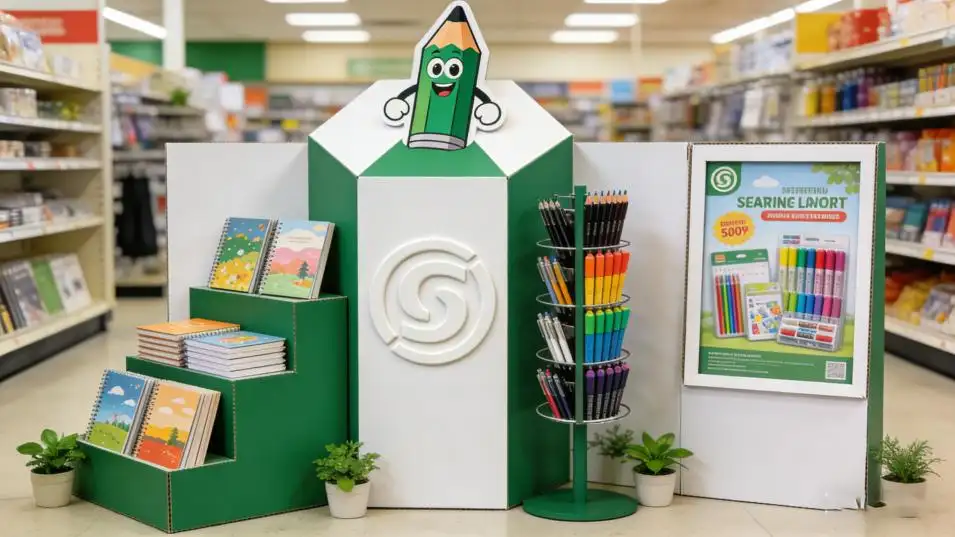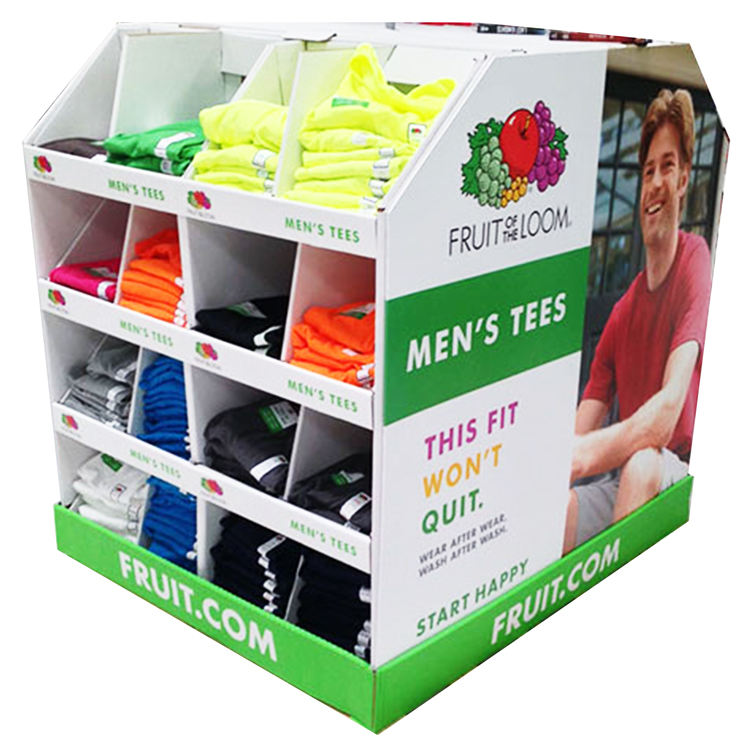Choosing the right display feels overwhelming. A bad choice means wasted money and missed sales. Let me help you find the perfect cardboard display for your specific product and store.
The best POP display depends on your product, marketing goals, and retail space. Floor displays are excellent for grabbing attention and moving large volumes. Counter displays are perfect for encouraging last-minute impulse buys. Specialty displays offer unique, creative branding opportunities.
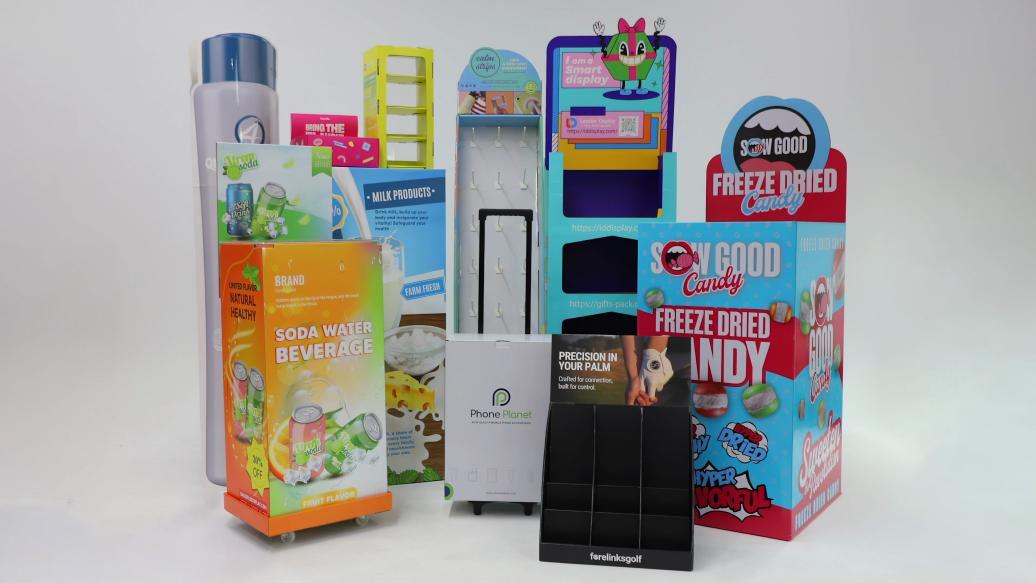
Selecting the right display is one of the most important decisions you'll make for in-store marketing. It's about more than just holding a product; it’s about creating an experience that stops a customer in their tracks. I've spent 16 years helping brands make this exact choice, and it always comes down to matching the display type to the sales strategy. Let's break down the options so you can see which one fits your needs. Getting this right from the start saves time, budget, and headaches down the line.
What Are the Disadvantages of POP Displays?
POP displays look like the perfect sales tool. But they can get damaged, create clutter, and cost more than you expect. Let's look at the real drawbacks to avoid surprises.
The main disadvantages are their potential for damage, especially with cardboard, and a limited lifespan in busy stores. They can also create clutter if poorly placed and may not be cost-effective for every campaign.
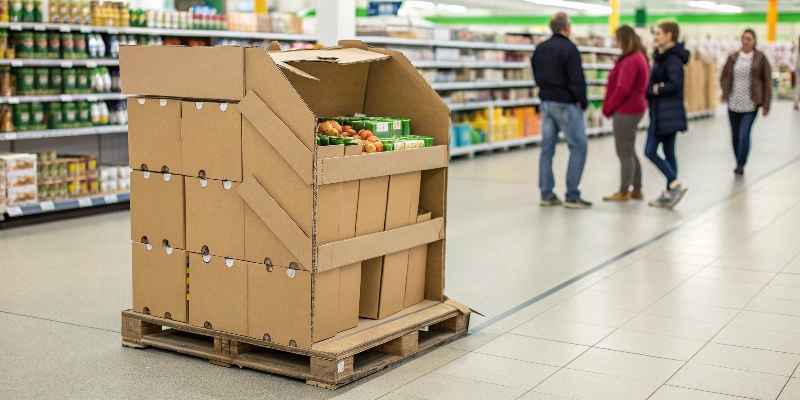
When I design a display for a client, I always want them to see the full picture. Cardboard displays are fantastic, but they aren't invincible. Understanding their limits is key to using them effectively. It’s not just about the upfront cost, but about how long the display will last and how it will look after a few weeks on a busy shop floor. Let's dive deeper into these challenges so you can plan for them.
Durability and Lifespan
The most common issue with cardboard displays is wear and tear. They are in high-traffic areas, so they get bumped by carts and people. Moisture from floor cleaning or spills can also weaken the base. While we use high-quality corrugated board and protective coatings, a cardboard display is still a temporary solution. I always tell my clients to think of it as a sprinter, not a marathon runner. It's built for a short, powerful promotional burst, not for permanent placement. For campaigns longer than a few months, we might need to discuss more durable materials or a plan to replace the units.
Design and Implementation Costs
A great custom display requires investment in design and production. A simple, generic display might be cheap, but it won’t stand out. The cost comes from structural design work, graphic design, printing plates, and manufacturing setup. For smaller runs, the cost per unit can be high. I once worked with a startup that wanted a very complex display for just 50 stores. The per-unit cost was a shock to them. We had to simplify the design to fit their budget. It’s crucial to balance a creative vision with the practical costs of production.
Potential for Clutter
If not planned properly with the retailer, POP displays can feel like an obstacle. Aisle space is precious. A poorly placed floor display can block traffic and frustrate shoppers and store staff. I always recommend getting store compliance and a planogram before shipping displays. This ensures the display has a designated home where it helps sales instead of getting in the way.
| Disadvantage | Cardboard Displays | Permanent Displays (Metal/Wood) |
|---|---|---|
| Durability | Lower, susceptible to damage | Higher, very robust |
| Lifespan | Weeks to months | Years |
| Initial Cost | Lower | Much Higher |
| Flexibility | High, easy to change for campaigns | Low, difficult to update |
| Clutter Risk | High if placed poorly | Lower, usually part of store layout |
What Are Cardboard Displays Called?
You've seen them everywhere, but what are they called? Not knowing the right terms makes it hard to talk to suppliers. I will help you learn the language we use.
Cardboard displays are most commonly called Point of Purchase (POP) displays or Point of Sale (POS) displays. Specific types have names like Floor Standing Display Units (FSDU), Counter Display Units (CDU), or Pallet Displays.
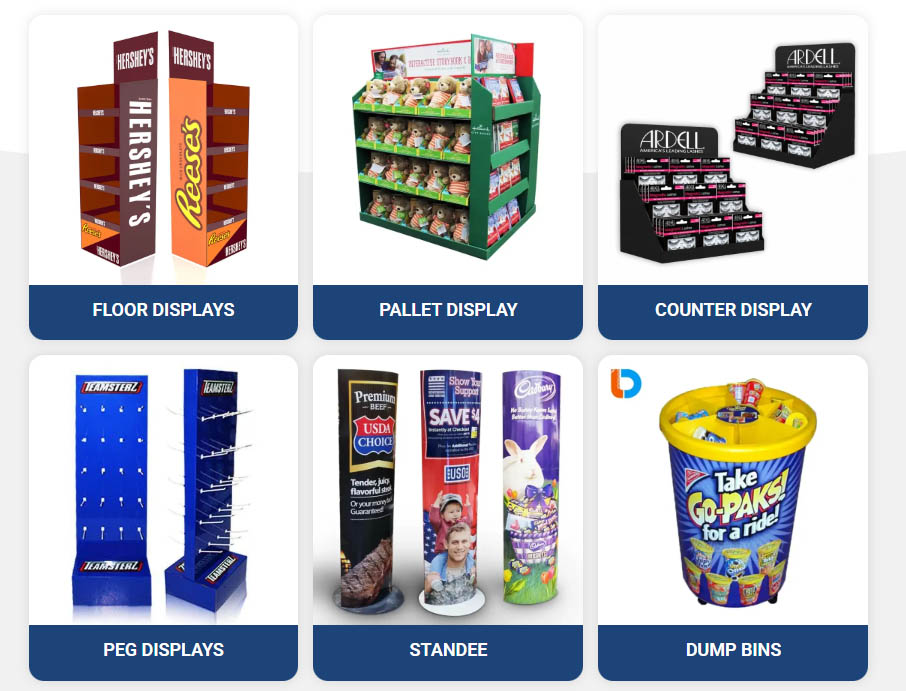
Knowing the industry terminology is a huge advantage. It helps you communicate clearly with designers like me and with manufacturers. When I started in this business, I learned quickly that saying "the big cardboard thing" wasn't going to work. Using precise terms ensures everyone is on the same page, from the first sketch to the final delivery. It makes the whole process smoother and more professional. Let’s look at the most common names you'll encounter.
Common Industry Acronyms
In the display world, we love our acronyms. They're shortcuts that help us describe things quickly. The most important ones to know are:
- POP: Point of Purchase. This refers to where a customer decides to buy an item, like in an aisle.
- POS: Point of Sale. This refers to where the transaction happens, like the checkout counter.
- FSDU: Floor Standing Display Unit. This is any standalone display that sits on the floor. It's one of the most popular types.
- CDU: Counter Display Unit. A smaller display designed to sit on a counter, usually near the checkout. Sometimes also called a countertop display.
Distinguishing Between POP and POS
People often use POP and POS interchangeably, but they have slightly different meanings. As I mentioned, POP is about the journey, and POS is about the destination (the cash register). A floor display in an aisle is a classic POP display because it influences the purchase decision there. A small tray of mints right by the cashier is a POS display because it triggers a final, impulse buy at the point of sale. In my experience, most clients just say "POP display" to cover everything, and that's usually fine.
Material-Specific Names
Sometimes, displays are named after the material they are made from. You will often hear terms like "corrugated displays" or "cardboard standees." "Corrugated" refers to the specific type of cardboard we use, which has a fluted layer between two flat liners. This structure is what gives the displays their strength while keeping them lightweight. So, if you ask me for a "corrugated POP display," I know you're looking for a sturdy, temporary display made from this material. It’s a very descriptive and accurate term to use.
What Is the Difference Between a Retail Display and a POP Display?
People often mix up "retail display" and "POP display." Using them wrong can lead to confusion when you're planning your store. Let's clear up what each term really means.
A retail display is a very broad term for any fixture used to show products, including permanent shelves. A POP display is a specific type of retail display used to promote a particular product, usually temporarily.
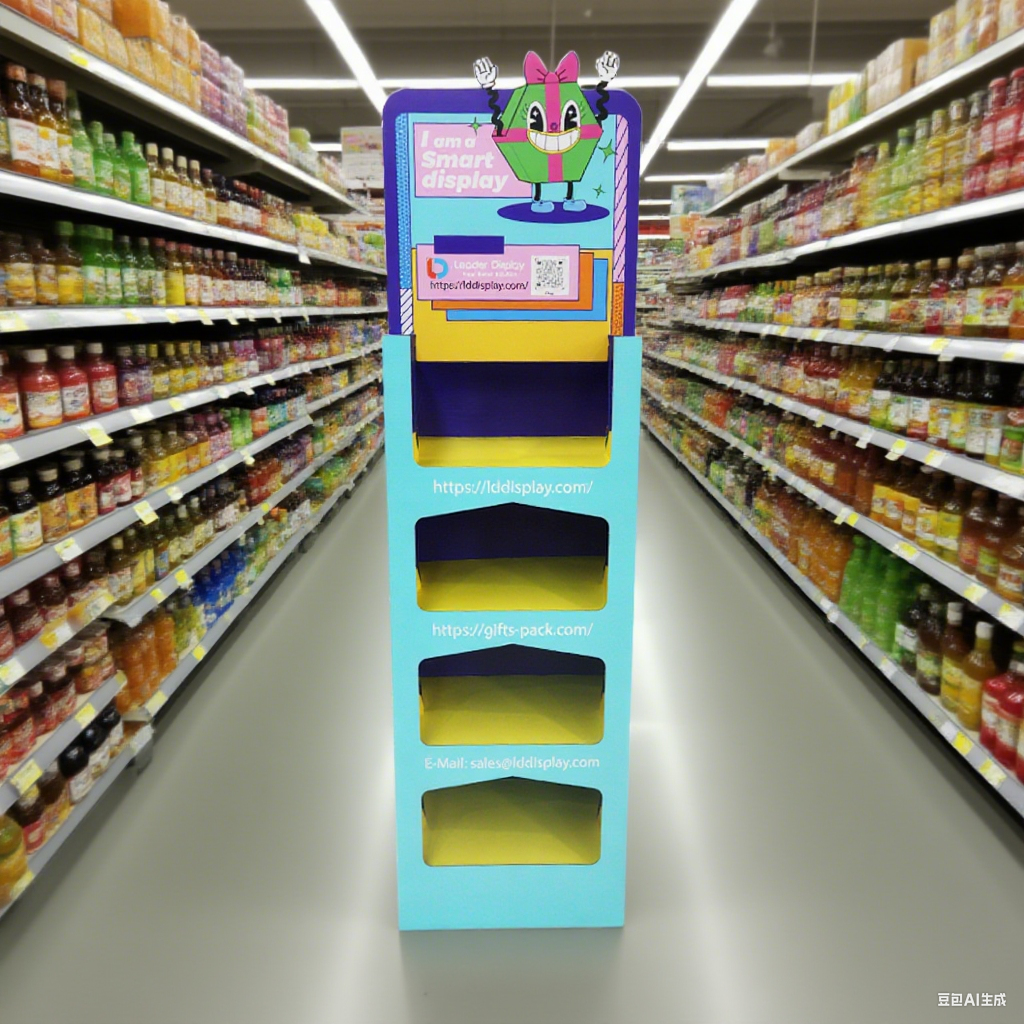
This is a really important distinction. Think of "retail display" as the parent category and "POP display" as one of the children. All POP displays are retail displays, but not all retail displays are POP displays. I’ve had clients ask for a "POP display" when what they really needed was a permanent shelving solution. Understanding the difference ensures you source the right tool for the job. Let’s compare them side-by-side.
Defining 'Retail Display'
A retail display is any equipment in a store that holds or presents merchandise to customers. This is a huge category. It includes the permanent structures that make up the store's foundation.
Here are some examples of general retail displays:
- Gondola Shelving: The standard double-sided shelving found in most grocery store aisles.
- Slatwall and Pegboard: Wall panels with slots or holes for hanging hooks and shelves.
- Mannequins: Used in clothing stores to display outfits.
- Glass Cases: For valuable items like jewelry or electronics.
These are built to last for years and are part of the store's basic infrastructure. Their main job is to organize and hold inventory in a neat way.
The Specific Role of a 'POP Display'
A POP display, on the other hand, is a marketing tool first and a fixture second. Its primary goal is to interrupt the customer's shopping journey and call attention to a specific product or promotion. It’s almost always branded and is designed to be visually loud. I design POP displays to tell a story and create urgency, encouraging an immediate purchase. They are the "special guests" in the store, there for a limited time to support a specific marketing campaign, a new product launch, or a seasonal sale.
A Comparison Table
Here’s a simple table to make the difference crystal clear.
| Feature | General Retail Display | Point of Purchase (POP) Display |
|---|---|---|
| Purpose | Organize & hold inventory | Promote & sell a specific product |
| Lifespan | Permanent (Years) | Temporary (Weeks/Months) |
| Material | Metal, wood, glass, plastic | Mostly cardboard, some plastic |
| Branding | Minimal or store-branded | Heavily product-branded |
| Location | Fixed, part of store layout | Flexible, placed in high-traffic areas |
What Are the Types of Point-of-Purchase (POP) Displays Used for Sales Promotion?
You need a display for your big promotion. But with so many options, it's hard to know which one will work best. I'll show you the most effective types.
Common POP displays for promotions are Floor Displays (FSDUs) for visibility, Counter Displays (CDUs) for impulse buys, Pallet Displays for bulk items, and Dump Bins for discounts and clearance sales.
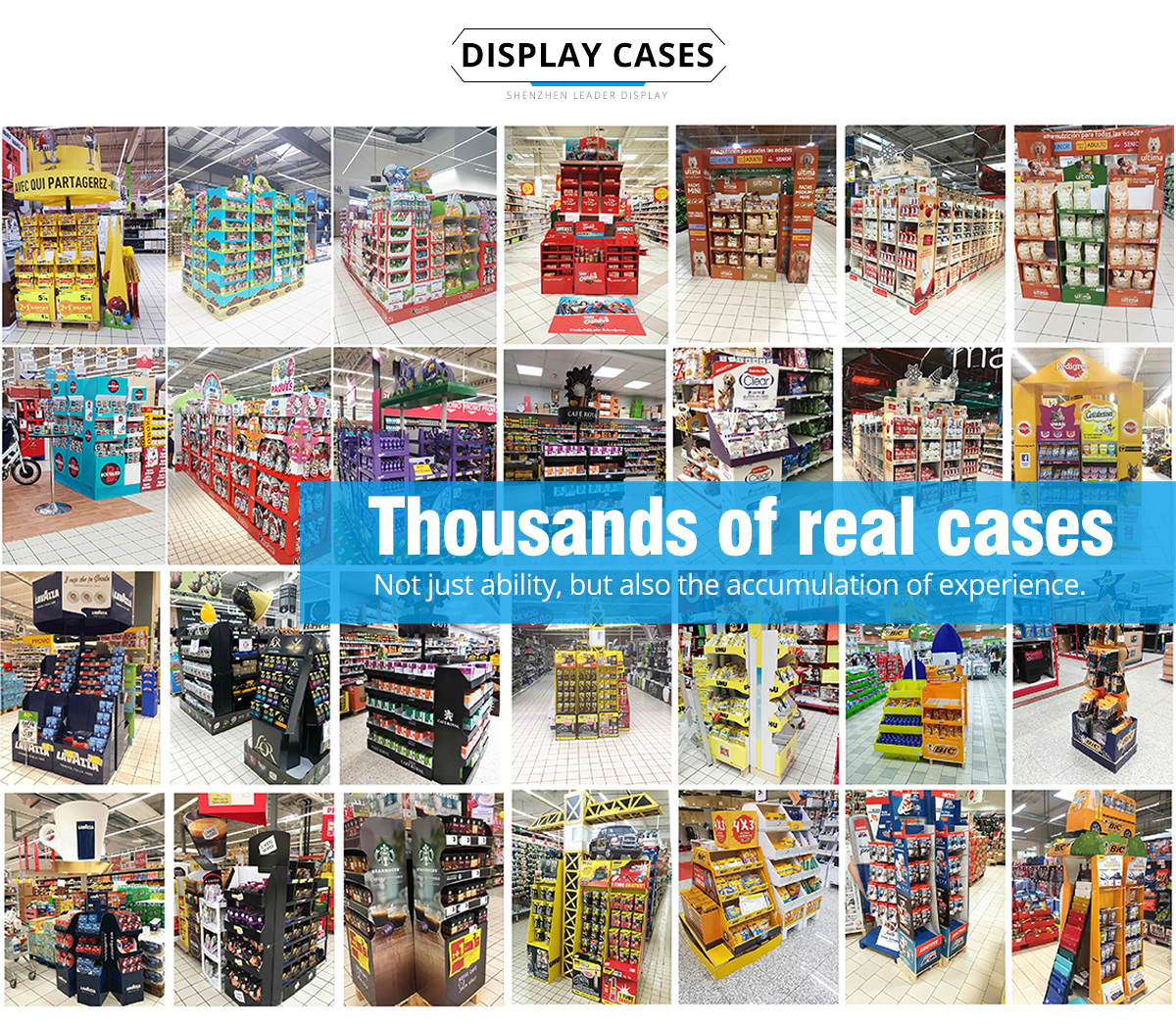
Over the past 16 years, I’ve designed thousands of displays for sales promotions. The goal is always the same: move product, fast. The display you choose has a direct impact on how successful your promotion will be. You wouldn't use a small counter display to sell 500 units of soda, and you wouldn't use a giant pallet display for a few lip balms. Matching the display type to the product and the promotion is the secret to success. Let’s dive into the heavy hitters.
Floor Displays for Maximum Impact
A Floor Standing Display Unit (FSDU) is your go-to for making a big statement. Placed at the end of an aisle (an endcap) or in an open space, they are impossible to miss. I recommend FSDUs for new product launches, seasonal promotions, or when you want to create a "shop-in-shop" feel. We can design them with shelves, hooks, or bins to fit your product perfectly. Their large surface area gives us plenty of space for bold graphics and messaging that tells your brand’s story and attracts customers from across the store.
Counter Displays for Impulse Purchases
A Counter Display Unit (CDU) is a small, powerful sales tool. Its home is the checkout counter, the single most valuable piece of real estate in any store. Every customer has to pass through it. I design CDUs for small, low-cost, high-margin items that people don't go to the store to buy but will grab on a whim. Think candy, batteries, gift cards, or lip balm. The key is to make them compact, eye-catching, and easy for the shopper to grab an item from without thinking twice.
Bulk Displays for Volume Sales
When you need to move a large volume of product, especially in a warehouse club or big-box store, nothing beats a Pallet Display or a Dump Bin.
- Pallet Displays: These are large displays that are shipped pre-loaded with product on a pallet. The retailer can simply place the entire unit on the sales floor with a forklift. It saves staff time and creates a massive product presence. They are perfect for things like soda, chips, or seasonal goods.
- Dump Bins: These are large, open-top bins that are perfect for discounted, clearance, or awkwardly shaped items. They encourage shoppers to "rummage" and find a deal. I've designed many for toy promotions and bargain book sales. They create a sense of a treasure hunt.
Conclusion
Choosing the right POP display is simple when you match it to your goal. Use floor displays for visibility, counter displays for impulse buys, and specialty displays for promotions.



